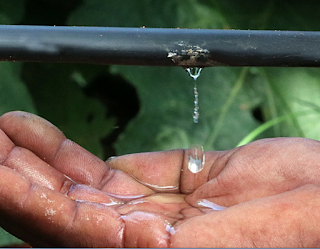Weather conditions are one of the
most critical elements affecting both the quantity as well as the quality of
agrarian yield. You know you can’t control the weather. However, with modern
solutions, you can combat various weather conditions and protect your crops
against them. So, in this view, you will look at the different ways of
safeguarding your crops against weather vagaries.
The Different Types of Weather Conditions:
At the outset, let us enlist the
most common weather conditions confronting Indian farmers, and affecting crops.
Doing so will help you have a clear and better understanding of the ways to
tackle the various weather conditions.
-
Floods
-
Droughts
-
Hailstorms
-
Un-seasonal Rains
Solutions to Protect Farm Crop from 4 Different Weather Conditions:
1. Floods
Floods can flood your farm during
very heavy rains, and especially when your land spread is proximal to a river.
Sudden floods don’t give time to think, and act, and which is why they prove
more detrimental than anything. Of course, you can’t completely stop floodwater
from entering your field. But, you can minimize the damage through a few
organized solutions, and in fact, let adversity work to your benefit.
-
Lower Edge Deep Drains:
Creating a deep drain alongside the lower edge of the farmland will help you
drain excess water safely into the nearby pond or in the soil. This technique
helps increase your soil water content.
-
Ridges and Furrow Farming System: Furrows are
another way
of draining excess water in a water reservoir. The excess drained water can be
later used for irrigation purposes
.
2. Droughts
Droughts are a commonly occurring
phenomenon in India. A large cultivable area of the country remains affected by
droughts, which affects the quantity of the agricultural produce of the
country. But, you can prepare for droughts in advance. Considering factors such
as rainfall shortage, you can take the following measures to lower the losses
resulting from the drought-ridden situation.
-
Rainwater Harvesting:
This is the most obvious solution to minimize the drought effect. Ideally, a
farm pond or the reservoir must occupy around 5-10% of the farmland to ensure
adequate storage of rainwater. It helps you use the stored water during dry
spells to ensure continuous water supply to
the crops.
-
Mulching: Mulching
involves covering the space between crops with a dry crop residue, which helps
retain the soil moisture. It keeps crop growth unaffected through the drought
period.
3. Hailstorms
Hailstorms are a sudden occurrence,
destroying the entire crop spread. However, using live windbreaks, with bamboo
rows, or other protective plants in the form of sheets on your crops can
protect your produce from the strong winds, and thus reduce the damage.
4. Un-Seasonal Rains
Often, unexpected rains leave
farmers in despair, as they are mostly unprepared for it. Some experts suggest
using chemicals to protect crops. However, that isn’t safe and unaffordable for
a lot of average Indian farmers. You can’t do much about unexpected rains. But,
you can lower the risk by following the weather forecast and plan to farm
accordingly.
Digital farming is the way out here!
Netafim’s
agricultural and irrigation expertise continues to help farmers safeguard their
farms, and make farming a profitable profession through modern irrigation
techniques and digital farming. If you wish to protect and improve your
agricultural produce through precision irrigation and smart farming, connect
with
Netafim





